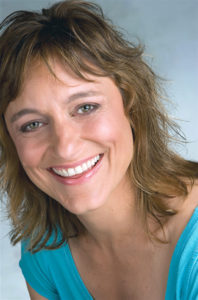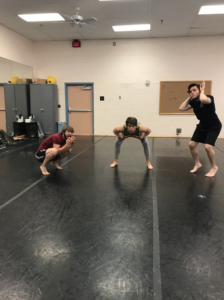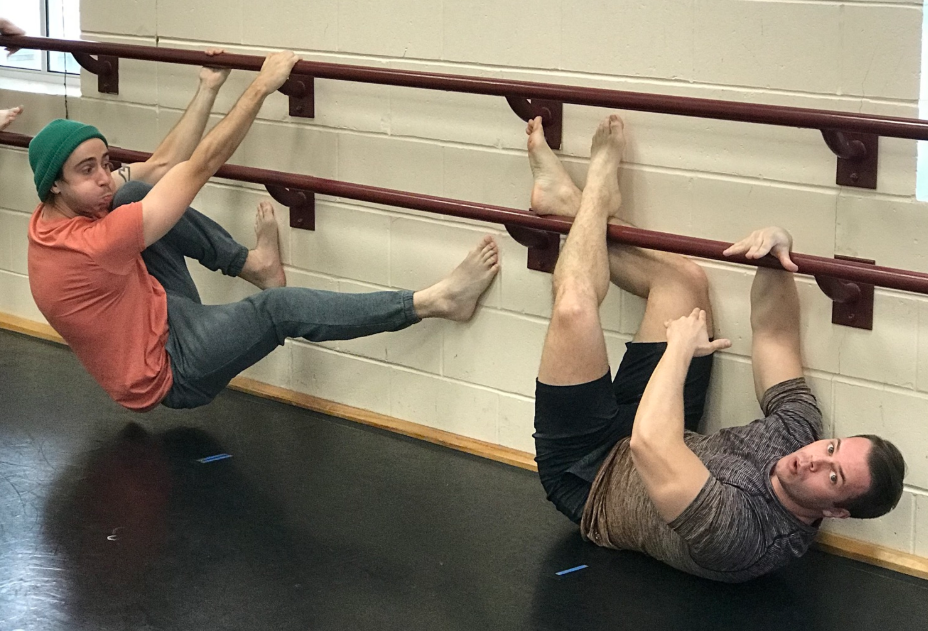FSU / Asolo Conservatory Instructor Makes Student Actors into Shapeshifters
Article courtesy of YourObserver.com written by: Marty Fugate Contributor
Eliza Ladd of FSU/Asolo Conservatory for Actor Training’s shape-shifting students demonstrate their mastery of movement.

Eliza Ladd: associate in teaching professor of movement and dance at the FSU / Asolo Conservatory for Actor Training. Courtesy photo
Doing what comes naturally is the hardest art of all. The best actors don’t seem to be acting. Their speech feels natural. Their movements feel spontaneous and real. That’s where Eliza Ladd comes in.
Around the nation, she’s known as a dancer, stage writer, performer, choreographer and director. At the FSU/Asolo Conservatory for Actor Training, Ladd is a movement and dance instructor. But that bare bones description barely captures what she teaches.
Draw a Venn diagram of the intersection of dance, physical characterization and body language. Ladd’s work is right at the center. If movement is a language, she teaches her students fluency. If the body is an instrument, she teaches them how to play it.
“Actors are shape-shifters,” she says. “Over the course of two years, we go over different forms of self-transformation.”
It doesn’t happen overnight. But through intense movement analysis, her students learn how their bodies are organized — all the variables of stance, weight distribution, timing and posture. They also learn their bodies’ expressive potential to serve the needs of theatrical storytelling. It takes their acting to a whole new level.
What does this actually look like?

Creg Sclavi, Michael Judah, and Joe Ferrarelli as a squirrel, a fish and a greyhound during class. Courtesy photo
A small group of conservatory students, instructors, sponsors and friends are about to find out. A happy few, not a crowd. But they’ve got front row seats in Ladd’s Open Movement Class. The experience unfolds in a cinderblock room with mats on the floor at the FSU Center for the Performing Arts. Not fancy. But right now, it’s probably the best show in town.
Ladd’s students begin, demonstrating just how much they’ve learned. Her second-year students start the show. Ladd says each has created a unique composition based on the movements of different animals. Ladd taps a drum. Things get moving quickly.
One student embodies the lithe physicality of a cat. She spies a plastic water bottle on a balance beam and knocks it off. This gets a laugh. After prowling around, she goes to the door and waits for somebody to let her out. They do. Five seconds later, she scratches to get back in. That gets another laugh. Another student transforms into a three-toed sloth. He hangs from the ballet barre with a goofy grin on his face. Another mimics the orangutan. He lopes around the room with his arms above his head. Or suspends himself from the ballet barre with only a single hand.
Ladd’s second-year students are a tough act to follow. But her first-year students don’t seem to mind. Grinning and fearless, they flow into the space to conclude the demonstration. They start with partner exercises on the floor. Next, they get on their feet for a collaborative piece. They start by walking slowly. But their pace gradually accelerates. Before long, they’re sprinting furiously in multiple trajectories. Despite the madcap pace, nobody collides. The first-year students are keenly aware of each other. Ladd has taught them well.
“There’s a lot going on here,” she says. “They’re aware of their bodies in space and how they relate to the rest of the ensemble. They’re constantly recalculating their timing and position. Like all actors, they’re paying attention to several different things simultaneously.”

Jillian Ciccales, Alex Pelletier, and Amber McNew as a koala, a cat and a raccoon in class. Courtesy photo
In the final dance, Ladd’s students morph into a parade of humanity. Their characters are nervous, aggressive, loving, defensive, curious — you name it. Through movement and body language alone, they tell you who they are. It seems like the most natural thing in the world. And therein lies the art. Ladd notes that it’s more than art for art’s sake. The techniques she teaches serve the magic of live theater. Her students can draw on that magic throughout their acting careers.
“Deepening their physical self-awareness expands what an actor can embody,” Ladd says. “Students learn to connect their inner life to outer physical expression.”
She says these techniques are all about conveying a greater complexity of characterization through movement, which can subtly change their performances and help them follow the “beats” of a story.
“They also become very rooted in their bodies — and get in touch with their primal instincts and feelings. Their acting feels very physical — very real, and from the heart.”
